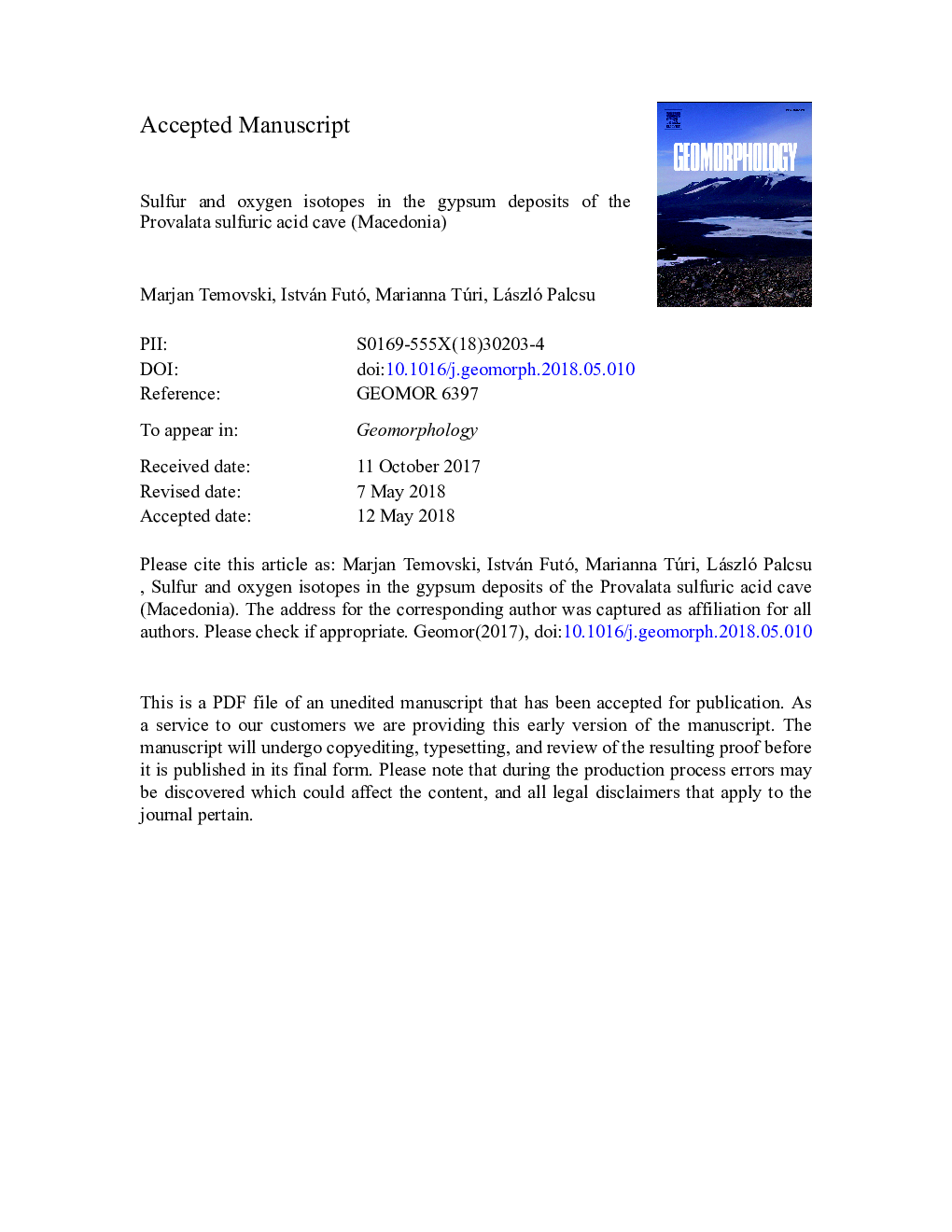| Article ID | Journal | Published Year | Pages | File Type |
|---|---|---|---|---|
| 8907990 | Geomorphology | 2018 | 35 Pages |
Abstract
Sulfur stable isotopes from cave sulfates (mainly gypsum) have been used in a number of studies to trace the source of sulfur in caves formed by sulfuric acid, but only few studies apply combined use of sulfur and oxygen stable isotopes to further understand the processes operating in sulfuric acid speleogenesis (SAS). Here we present results of a detailed study of the distribution of sulfur and oxygen stable isotopes within the gypsum deposits formed during sulfuric acid speleogenesis of Provalata Cave (Macedonia). The δ18O (vs VSMOW) values range between â3.9â° and +8.2â°, and the δ34S (vs CDT) values between â7.5â° and +0.7â°. We found a strong positive correlation between the δ18O and δ34S values, with a 0.5â° increase in the δ34S for every 1â° increase in the δ18O, indicating that both oxygen and sulfur isotopes were concurrently affected during the oxidation process. We attribute these effects to be either due to environmental control (concentrations of H2S and O2) or due to isotope fractionation during multi-step microbial oxidation, also affected by the environmental conditions. Additionally a shift of +1.85â° in the δ34S values prior to the H2S oxidation is found, indicating evolution of the H2S δ34S in the SAS system. The wide range of both δ18O and δ34S values in the gypsum deposits of the small Provalata Cave show that both the number of samples and their location can be an important factor for the understanding of sulfuric acid speleogenesis using stable isotopes.
Related Topics
Physical Sciences and Engineering
Earth and Planetary Sciences
Earth-Surface Processes
Authors
Marjan Temovski, István Futó, Marianna Túri, László Palcsu,
